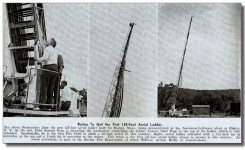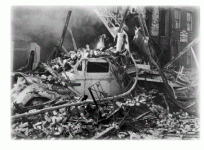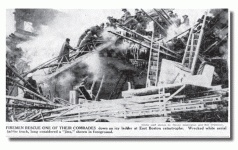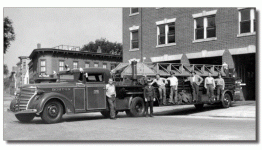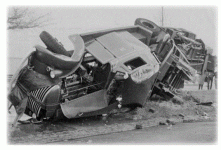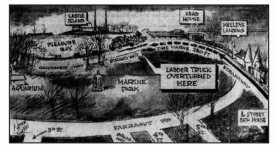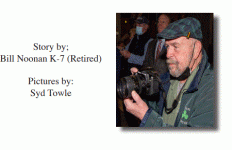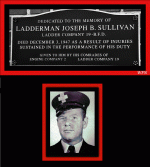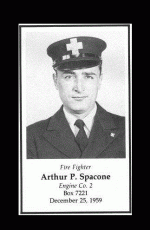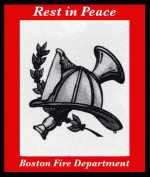

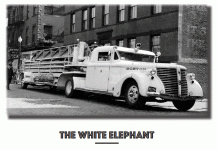
How many of you thought that Boston’s fire apparatus was always red, except when they tried that horrible green color in the late 1970s?
In 1941, the city purchased a 1941 American LaFrance tractor-drawn 125-foot metal aerial, five (5) section ladder. It was painted white! There were rumors about why it was white; all speculation. Some say it had originally been built for Denver, Colorado because they had white rigs. Others say it was white just to be different. Whatever the reason, Boston purchased it. It was assigned to Ladder Co. 8 in Fort Hill Square, downtown, on September 11, 1941. The new truck was a 500 Series American LaFrance cab, manufactures number 8106-C672, and was assigned Shop Number 207.
This was a new type of apparatus for the city. It had a sizeable closed-in cab, and a metal aerial ladder. The fully extended, 125-foot aerial could operate two (2) ladder pipes, 600 GPM at 125 feet and 1100 GPM at 65 feet. It was equipped with a 240 horsepower V-12 engine. The bell was mounted behind the grill but was later moved up near the turntable. The new truck was also equipped with a Marz ”Figure 8” warning light on the cab’s roof. The price of this truck was $24,000, which was an expensive purchase in 1941.
The narrow streets and parked cars made in difficult to drive in the city. All other apparatus had open cabs, except the 1930 Federal Rescue trucks, assigned to Rescue Companies 1 and 3. Inside the cab, the visibility was terrible; looking through the narrow windshield, firefighters equated the rig to being inside an army tank. The overall length was fifty-three (53) feet, seven (7) inches, which was ten (10) feet shorter than the contemporary 85-foot wood aerial as advertised in the trade journals.
Attachments
Last edited:

